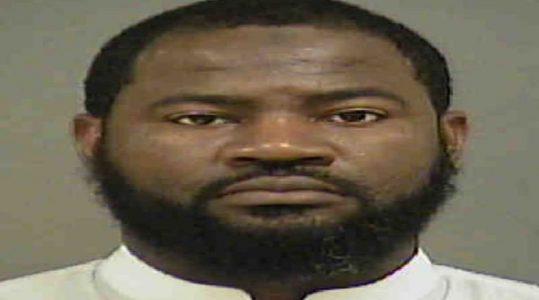
Man who tried to create ISIS-inspired terror cell in U.S gets 15 years in prison
A man who tried to create a terrorist cell to carry out attacks in the U.S. in the name of the Islamic State was sentenced Monday to 15 years in federal prison, half the amount sought by federal prosecutors.
Erick Jamal Hendricks, of Charlotte, North Carolina, was convicted by a jury in March of trying to recruit and train ISIS sympathizers. He vetted people to see if they were suitable to join him, espoused radical views, and instructed others to vet additional possible recruits through social media.
The U.S. Attorney’s Office asked U.S. District Judge John Adams to sentence Hendricks, 38, to 30 years in prison, the maximum amount of time allowed for the two charges for which the jury found him guilty. However, Adams said a lesser sentence was warranted.
Much of Monday’s hearing focused on the sentences given to five anarchists convicted in a plot to blow up the Ohio 82 bridge over the Cuyahoga Valley National Park in 2012. The U.S. Probation Office recommended sentences of more than 30 years for several of the men, but the most any of them received was 12 1/2 years.
Adams repeatedly pressed lawyers on both sides whether it was fair for those men, who were found guilty in a plot that involved actually pressing a button on what they thought was a detonator, to get shorter sentences than Hendricks, who committed most of his acts online and did not participate in any attack.
In the end, Adams said he did not rely on the bridge-bombing case when issuing his sentence. The judge noted Hendricks’ crimes but also said Hendricks’ actions in court were respectful and that he carried himself with “a certain quiet dignity.”
The judge said he would further outline the reasons for the sentence in a written order.
Hendricks’ federal public defender Ed Bryan asked Adams for a 10-year prison sentence. Hendricks maintains his innocence and is expected to appeal his convictions.
“I’m not the person that my accusers accused me of being,” said Hendricks, who wore an orange jail jumpsuit with his hands shackled at the waist. He asked the judge for mercy, but said nothing of the crimes of which a jury found him guilty.
Adams said Hendricks will be on probation for life, which he reasoned will allow the government to closely monitor his activities once released. He also barred Hendricks from having any terrorist literature.
Hendricks was arrested in North Carolina in August 2016. His trial was one of the more interesting to take place in federal court in Akron in some time, and included an undercover agent testifying to a courtroom closed to the public.
Prosecutors said Hendricks did much of his work through Twitter and various encrypted chat apps, though the FBI tracked him in Baltimore as he met in person with someone he believed to be a recruit. That man was an FBI agent.
Hendricks exhibited a sense of paranoia and used counter-surveillance measures, often changing social media handles and breaking up words related to the Islamic faith with spaces when using chat apps on his phone, authorities said.
Justice Department attorney Rebecca Magnone said at trial that Hendricks had plans to buy land off the grid in rural areas in California and New Mexico to train recruits.
A large part of the government’s case against Hendricks centered on his connection to one of two gunmen who opened fire at “The First Annual Muhammad Art Exhibit and Contest” in Garland, Texas in May 2015. Elton Simpson and Nadir Hamid Soofi drove from Phoenix to Garland, which is outside Dallas. They wounded a security guard before a police officer and killed them.
Hendricks was not in Texas but was chatting with an undercover FBI agent before and after Simpson and Soofi opened fire. The agent testified that he was in Garland at the time and saw Simpson and Soofi open fire, but he was not aware of the pair’s plan before it was executed.
Source: Cleveland





